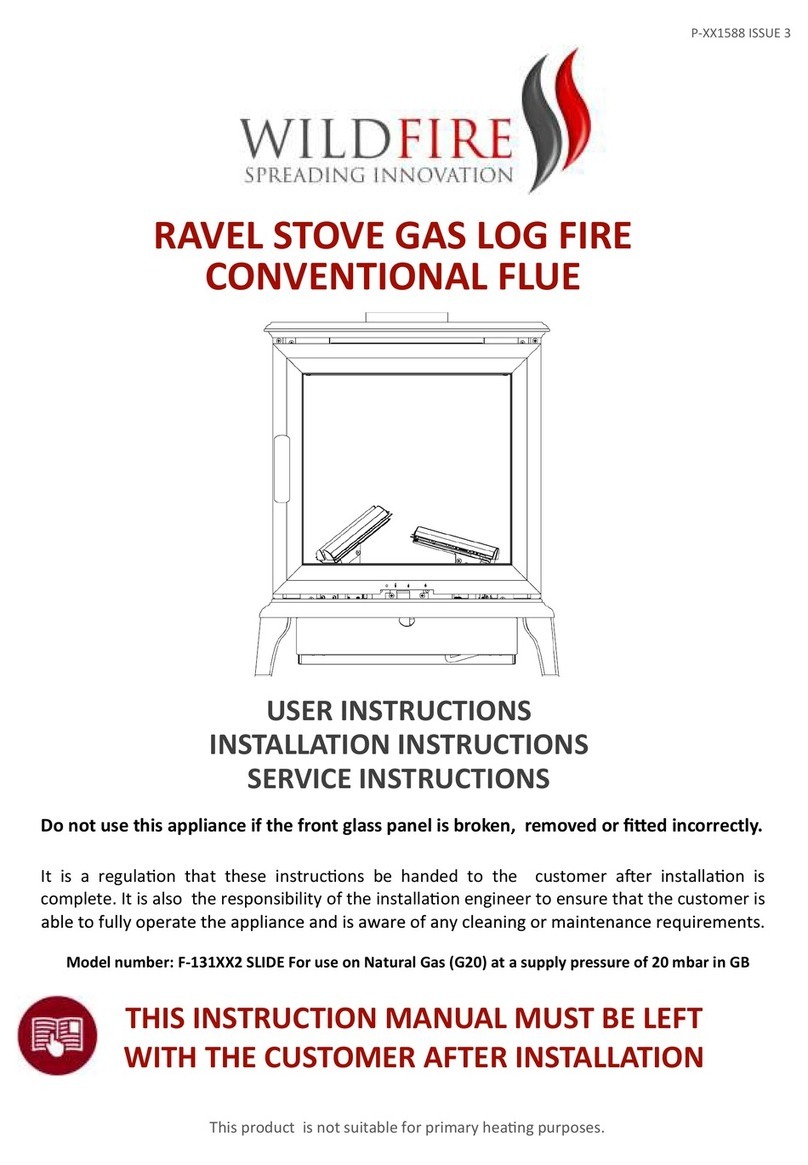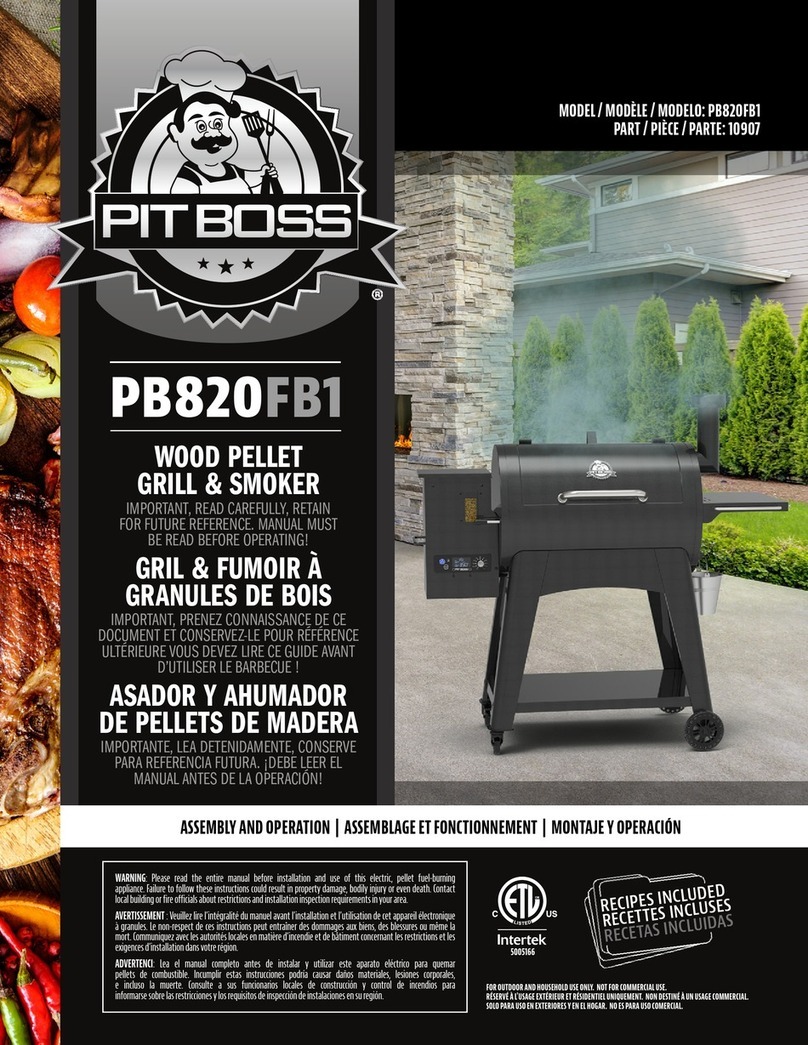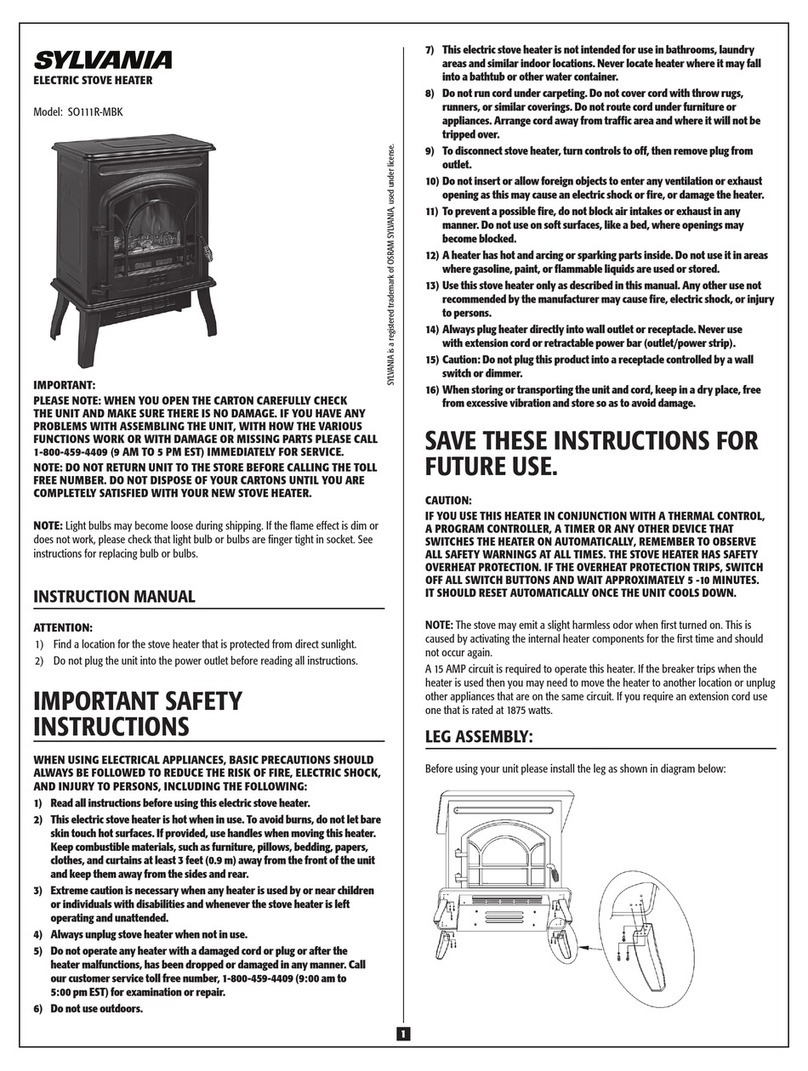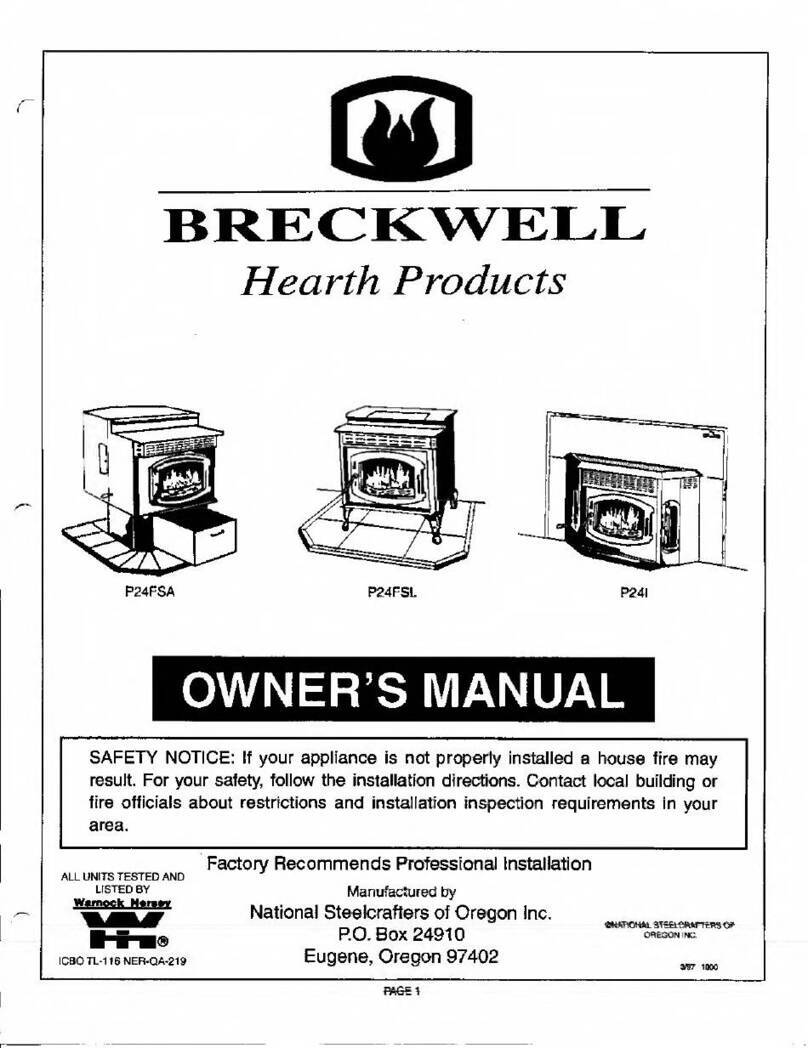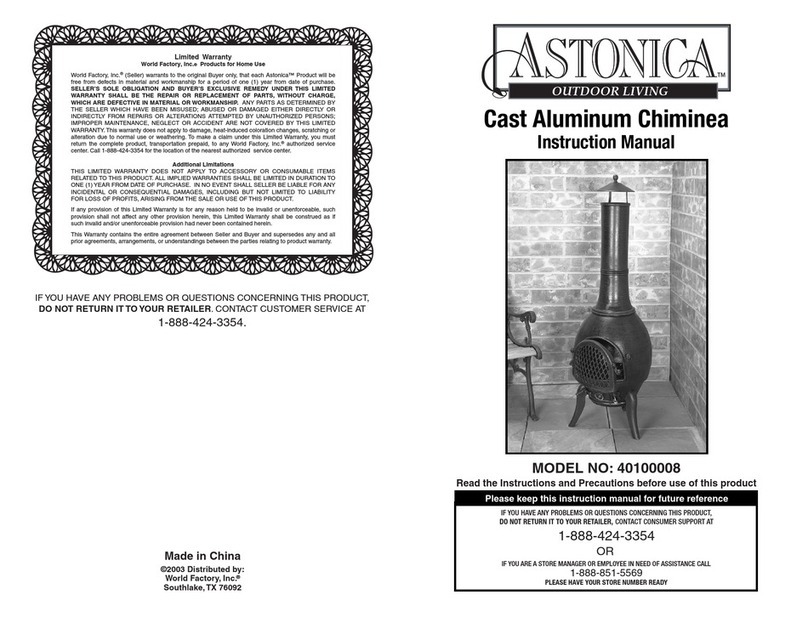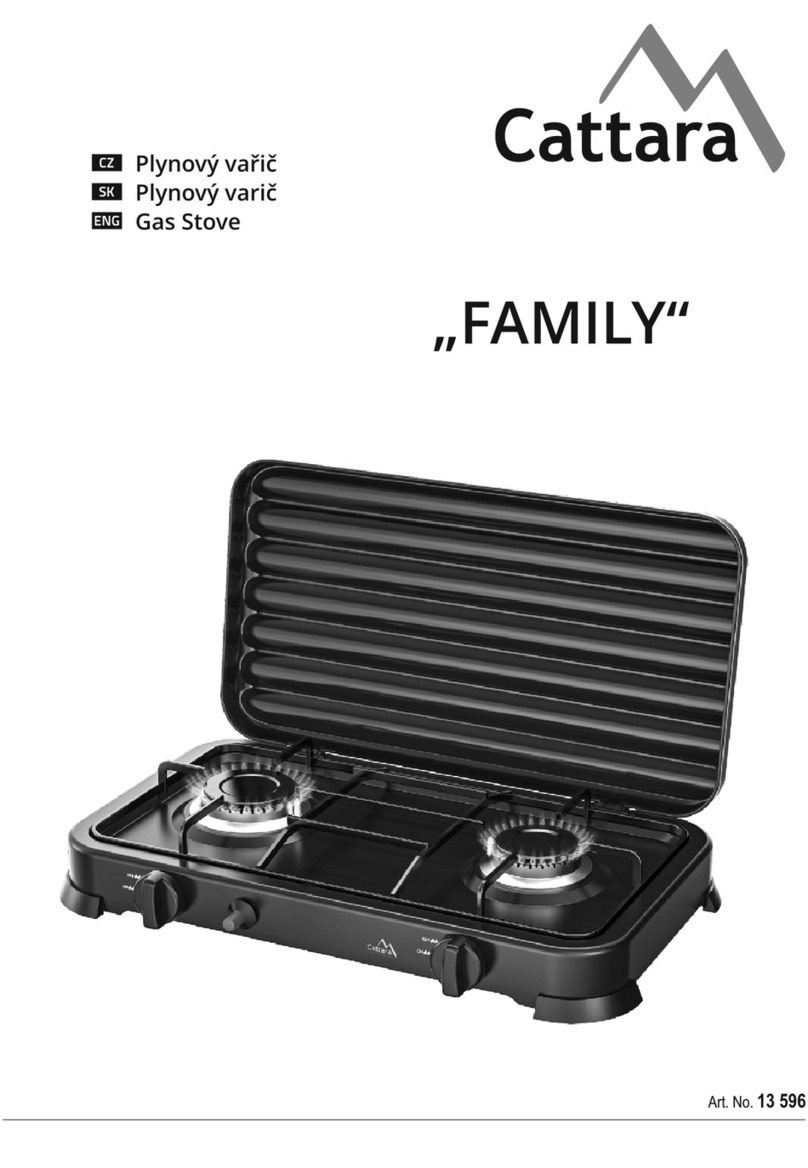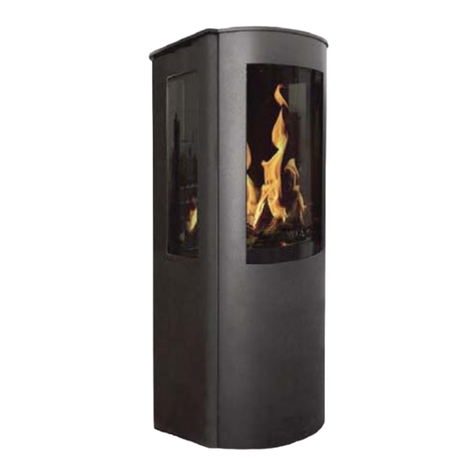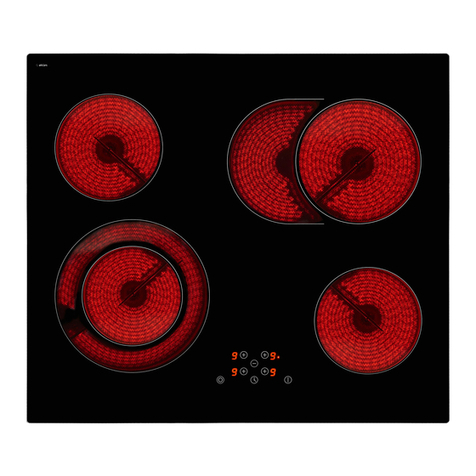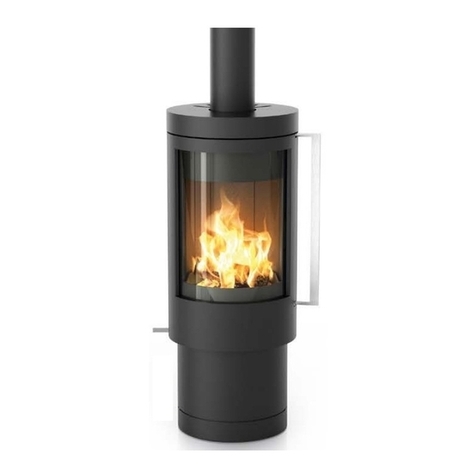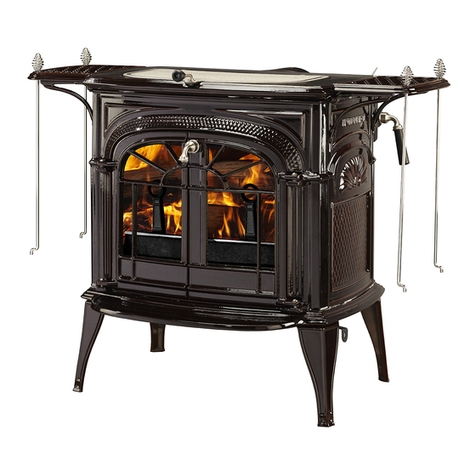6
7. The venting system (chimney) of this appliance should be inspected at least once a year and if needed, your
venting system should be cleaned.
8. Keep the area around your appliance clear of combustible materials, gasoline and other flammable vapours and
liquids. This appliance should not be used as a drying rack for clothing nor should Christmas stockings or
decorations be hung from it.
9. Under no circumstances should any solid fuels ( wood, paper) be used in this appliance.
10. For safe operation, purge gas line with glass door removed to assure a continuous flow of gas to the burner. Glass
doors must be installed for stove to operated safely.
11. Do not use this heater if any part has been under water. Immediately call a qualified service technician to inspect
the heater and to replace any part of the control system and any gas control which has been under water.
12. Do not operate appliance unless completely installed as per installation instructions.
13. This appliance must not be connected to a chimney flue servicing a separate solid fuel burning appliance.
14. Gas fired appliances may be used only for supplemental heat and/or decorative purposes and under no
In the Commonwealth of Massachusetts, the installer or service agent shall be a plumber or gas fitter licensed by
the Commonwealth.
When installed in the Commonwealth of Massachusetts or where applicable codes; the unit shall be installed with a
CO detector per the requirements listed below.
1.For direct-vent appliances, mechanical-vent heating appliances or domestic hot water equipment, where the
bottom of the vent terminal and the air intake is installed below four feet above grade the following
requirements must be satisfied:
A If there is not one already present, on each floor level where there are bedroom(s), a carbon monoxide detector and
alarm shall be placed in the living area outside the bedroom(s). The carbon monoxide detector shall comply with
NFPA 720 (2005 Edition).
B. A carbon monoxide detector shall be located in the room that houses the appliance or equipment and shall:
a. Be powered by the same electrical circuit as the appliance or equipment such that only one service switch
services both the appliance and the carbon monoxide detector;
b. Have battery back-up power;
c. Meet ANSI./UL 2034 Standards and comply with NFPA 720 (2005 Edition); and
d. Have been approved and listed by a Nationally Recognized Testing Laboratory as recognized under 527 CMR.
C. A Product-approved vent terminal must be used, and if applicable, a Product-approved air intake must be used.
Installation shall be in strict compliance with the manufacturer’s instructions. A copy of the installation instructions
shall remain with the appliance or equipment at the completion of the installation.
D.A metal or plastic identification plate shall be mounted at the exterior of the building, four feet directly above the
location of vent terminal. The plate shall be of sufficient size to be easily read from a distance of eight feet away,
and read “Gas Vent Directly Below”.
2. For direct-vent appliances, mechanical-vent heating appliances or domestic hot water equipment where the bottom of
the vent terminal and the air intake is installed above four feet above grade the following requirements must be
satisfied:
A If there is not one already present, on each floor level where there are bedroom(s), a carbon monoxide detector and
alarm shall be placed in the living area outside the bedroom(s). The carbon monoxide detector shall comply with
NFPA 720 (2005 Edition).
B. A carbon monoxide detector shall:
a. Be located in the room that houses the appliance or equipment;
b. Be either hard-wired or battery powered or both; and
c. Shall comply with NFPA 720 (2005 Edition).
C. A Product-approved vent terminal must be used, and if applicable, a Product-approved air intake must be used.
Installation shall be in strict compliance with the manufacturer instructions. A copy of the installation instructions
shall remain with the appliance or equipment at the completion of the installation.
Installation Requirements for the Commonwealth of Massachusetts

